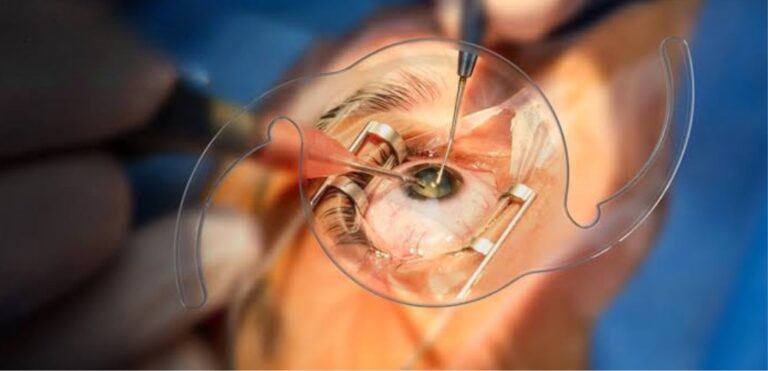Facial Reconstruction Surgery in UAE: Addressing Birth Differences
In the United Arab Emirates, a growing emphasis on comprehensive healthcare includes specialized surgical interventions to address congenital anomalies affecting the face. These birth differences, ranging from minor structural variations to more complex deformities, can impact not only physical appearance but also essential functions such as breathing, eating, and speech development. Facial Reconstruction Surgery in UAE(جراحة إعادة بناء الوجه في الإمارات العربية المتحدة) offers hope and transformative solutions for individuals born with these conditions, aiming to restore both form and function, thereby enhancing their quality of life and self-esteem.
Understanding Congenital Facial Anomalies
Congenital facial anomalies encompass a wide spectrum of conditions that arise during fetal development. These can include cleft lip and palate, craniofacial syndromes affecting skull and facial bone growth, microtia (underdeveloped ear), and various other less common conditions. The causes of these anomalies can be multifactorial, involving genetic predispositions, environmental influences during pregnancy, or a combination of both. Early diagnosis and intervention are often crucial in managing these conditions effectively. In the UAE, advancements in medical imaging and prenatal screening contribute to the early identification of many congenital facial anomalies, allowing for timely planning of reconstructive strategies.
The Role of Surgical Intervention in Correction
Facial reconstruction surgery plays a pivotal role in correcting congenital anomalies of the face in the UAE. The specific surgical techniques employed depend on the type and severity of the anomaly. For cleft lip and palate, a series of surgeries are typically performed, often starting in infancy, to close the lip and palate, improve feeding and speech, and achieve a more natural facial appearance. Craniofacial surgeries address deformities of the skull and facial bones, often requiring intricate procedures involving bone grafting and reshaping to ensure proper brain development and facial symmetry. Microtia reconstruction involves creating an ear using cartilage harvested from the patient’s ribs. The goal of these surgical interventions is not only to improve aesthetics but also to restore or improve essential functions and promote normal development.
A Multidisciplinary Approach to Care
Optimal management of congenital facial anomalies in the UAE necessitates a multidisciplinary approach involving a team of specialists. This team may include plastic and reconstructive surgeons, pediatricians, orthodontists, speech therapists, audiologists, and psychologists. The collaborative expertise of these professionals ensures that all aspects of the child’s needs are addressed, from the initial diagnosis and surgical correction to speech and feeding therapy, dental alignment, and psychosocial support. This comprehensive and coordinated care model is essential for achieving the best possible long-term outcomes for individuals with congenital facial anomalies.
Advanced Surgical Techniques and Technologies
Facial reconstruction surgery in the UAE benefits from the availability of advanced surgical techniques and technologies. Microsurgery plays a crucial role in complex reconstructions, allowing surgeons to meticulously repair delicate tissues and blood vessels. Three-dimensional imaging and computer-assisted planning are increasingly utilized to precisely plan surgical procedures and visualize expected outcomes. The use of biocompatible materials and innovative surgical instruments further enhances the precision and success of these reconstructive efforts. The commitment to adopting and implementing cutting-edge techniques underscores the dedication to providing the highest standards of care for patients with congenital facial anomalies in the UAE.
Long-Term Management and Follow-Up Care
Facial reconstruction for congenital anomalies often involves a series of procedures performed over several years, particularly in cases like cleft lip and palate or craniofacial syndromes where growth and development need to be considered. Therefore, long-term management and follow-up care are crucial in the UAE. Regular appointments with the surgical team and other specialists allow for monitoring of growth, assessment of functional outcomes (such as speech and feeding), and planning for any necessary secondary procedures or adjunctive therapies. This ongoing care ensures that individuals with congenital facial anomalies receive continuous support throughout their developmental years and beyond.
Enhancing Quality of Life and Psychosocial Well-being
The impact of successful facial reconstruction surgery for congenital anomalies extends far beyond physical appearance. By restoring form and function, these procedures can significantly enhance an individual’s quality of life and psychosocial well-being. Improved facial aesthetics can boost self-esteem and confidence, reducing the social stigma often associated with facial differences. Improved function, such as clearer speech and easier eating, can lead to greater independence and social integration. The comprehensive care provided in the UAE aims to address both the physical and emotional needs of individuals with congenital facial anomalies, empowering them to lead fulfilling lives.
FAQs about Congenital Anomalies and Facial Reconstruction in UAE
What are some common congenital facial anomalies addressed with surgery in the UAE? Cleft lip and palate, craniofacial deformities, and microtia are among the conditions commonly treated.
What is the typical approach to correcting congenital facial anomalies? Often involves a series of surgical procedures and a multidisciplinary team of specialists.
What role does a multidisciplinary team play in the care of these conditions? The team provides comprehensive support addressing surgical, medical, developmental, and psychosocial needs.
What advanced techniques are used in facial reconstruction surgery in the UAE? Microsurgery, 3D imaging, and computer-assisted planning are increasingly utilized.
Is long-term follow-up care necessary for congenital facial anomalies? Yes, ongoing monitoring and potential secondary procedures are often required, especially during growth and development.
How does facial reconstruction surgery impact the quality of life? By improving aesthetics and function, it can significantly enhance self-esteem, social integration, and overall well-being.
What is the overall goal of facial reconstruction for congenital anomalies in the UAE? To restore form and function, promote normal development, and improve the long-term quality of life for affected individuals.




